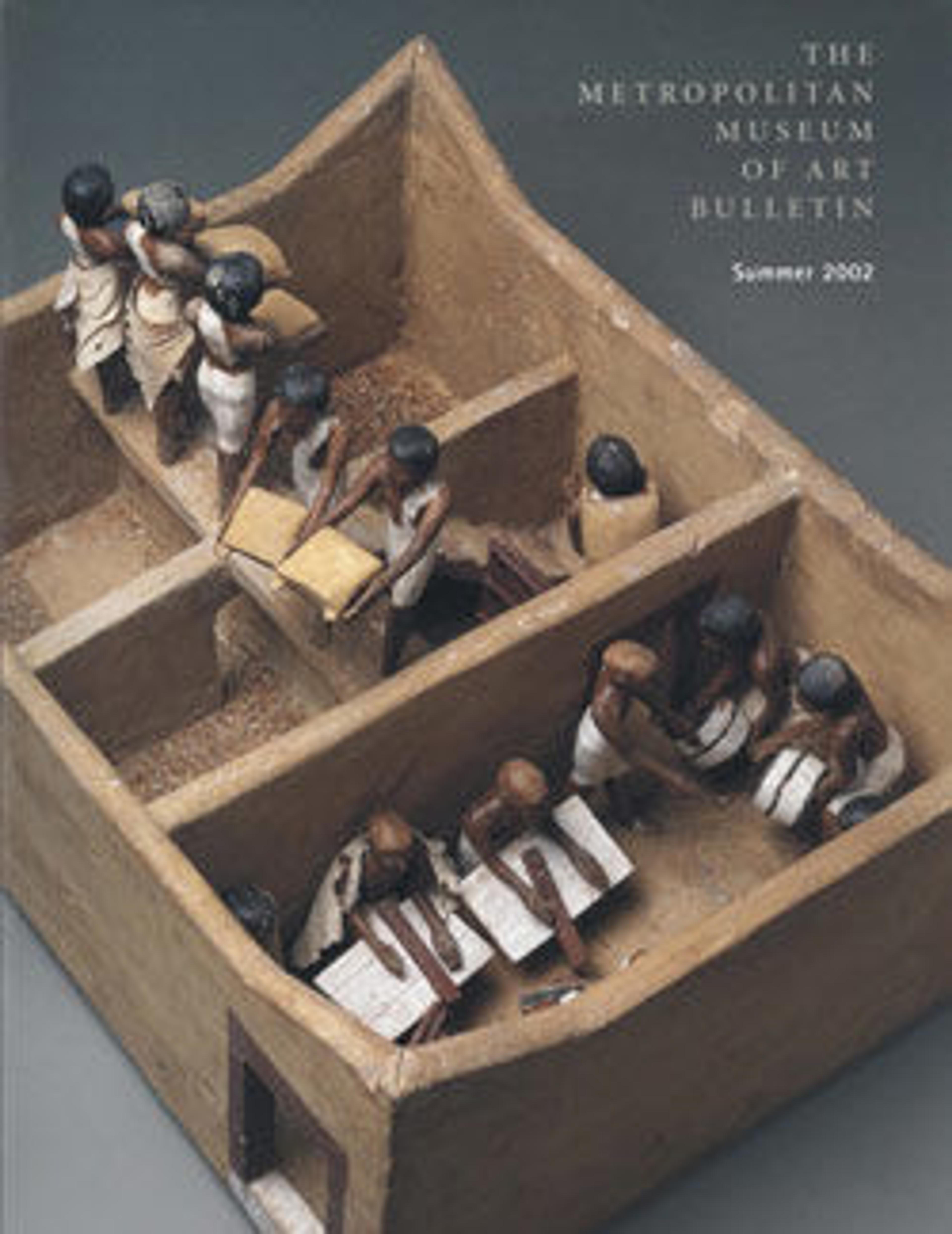Scarab of Wah
This scarab ring and three scarab bracelets (40.3.12-.14) were found in the wrappings over Wah's crossed wrists. In Wah's time, the scarab was a relatively new invention having been developed only about a century earlier, sometime in the middle of the First Intermediate Period (about. 2100-2030 B.C.). The amulet is shaped like a dung beetle, scarabaeus sacer, which is also the source of its modern name.
The dung beetle was "kheperer" in ancient Egyptian. Having watched the small creatures push huge balls of dung, the ancient Egyptians imagined the sun being pushed into the sky at dawn by a beetle, and they referred to the rising sun as "Kheperi." The word for "to become" or "come into being" was "kheper," and the beetle hieroglyph was used to spell all of these words. As such, the scarab became a powerful amulet for rejuvenation in this life and reincarnation in the next.
Some scarabs, like this one, are a simple oval shape with little or no decoration. Others, like Wah's two silver examples, are more elaborate depictions of the insect.
The dung beetle was "kheperer" in ancient Egyptian. Having watched the small creatures push huge balls of dung, the ancient Egyptians imagined the sun being pushed into the sky at dawn by a beetle, and they referred to the rising sun as "Kheperi." The word for "to become" or "come into being" was "kheper," and the beetle hieroglyph was used to spell all of these words. As such, the scarab became a powerful amulet for rejuvenation in this life and reincarnation in the next.
Some scarabs, like this one, are a simple oval shape with little or no decoration. Others, like Wah's two silver examples, are more elaborate depictions of the insect.
Artwork Details
- Title: Scarab of Wah
- Period: Middle Kingdom
- Dynasty: Dynasty 12
- Reign: reign of Amenemhat I, early
- Date: ca. 1981–1975 B.C.
- Geography: From Egypt, Upper Egypt, Thebes, Southern Asasif, Tomb of Wah (MMA 1102), Mummy, in left palm, MMA excavations, 1920
- Medium: Faience, linen thread
- Dimensions: L. 2.6 cm (1 in); w. 2 cm (13.16 in); h. 1.4 cm (9/16 in)
- Credit Line: Rogers Fund and Edward S. Harkness Gift, 1940
- Object Number: 40.3.11
- Curatorial Department: Egyptian Art
More Artwork
Research Resources
The Met provides unparalleled resources for research and welcomes an international community of students and scholars. The Met's Open Access API is where creators and researchers can connect to the The Met collection. Open Access data and public domain images are available for unrestricted commercial and noncommercial use without permission or fee.
To request images under copyright and other restrictions, please use this Image Request form.
Feedback
We continue to research and examine historical and cultural context for objects in The Met collection. If you have comments or questions about this object record, please contact us using the form below. The Museum looks forward to receiving your comments.
